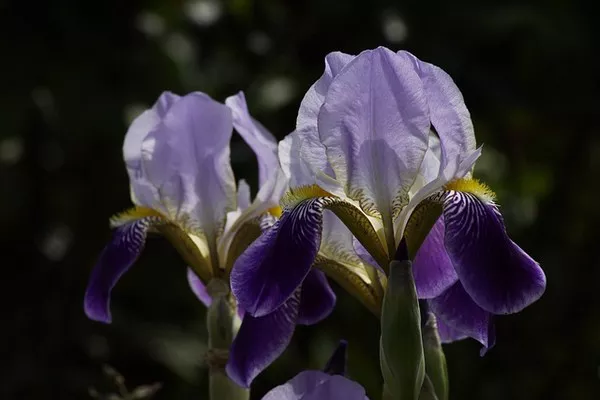Flowers have an innate charm that captivates us with their vibrant colors, delicate petals, and enchanting fragrances. While their ephemeral nature is part of their allure, preserving these natural wonders through the art of drying allows us to extend their beauty well beyond their typical lifespan. Whether you wish to cherish a sentimental bouquet, create captivating crafts, or enhance your home décor, learning how to dry flowers effectively is a skill that can elevate your floral experience. In this comprehensive guide, we will explore various techniques and considerations to ensure your dried flowers remain a testament to nature’s splendor.
Selecting the Right Flowers
Not all flowers are created equal when it comes to drying. Certain blooms lend themselves better to the drying process due to their structural integrity and moisture content. Flowers with thicker petals, low moisture content, and sturdy stems tend to dry more successfully. Roses, lavender, baby’s breath, hydrangeas, and eucalyptus are excellent choices for drying due to their robust nature.
Choose flowers that are at their peak, avoiding blooms that are too mature or damaged. The ideal time to harvest flowers for drying is in the morning, after the dew has evaporated but before the heat of the day causes moisture loss. This ensures that the flowers retain their vibrant colors and essential oils.
Drying Techniques
There are several methods to dry flowers, each offering unique benefits and results. The choice of technique depends on the type of flowers you’re preserving and the level of preservation you desire.
Air Drying
Air drying is one of the simplest and most traditional methods of drying flowers. To air dry flowers:
Gather a small bundle of flowers and tie them together with a string or rubber band.
Hang the bundles upside down in a cool, dry, and dark area with good air circulation. An attic or closet is an ideal location.
Check the flowers regularly to monitor their progress. The drying process can take anywhere from a few days to a few weeks, depending on the flower type and environmental conditions.
Pressing
Pressing flowers is perfect for creating delicate, flattened blooms suitable for crafts, such as card-making or framed botanical art. Here’s how to press flowers:
Place the flowers between layers of absorbent paper, such as parchment or blotting paper.
Arrange the flowers carefully, ensuring they don’t overlap.
Place heavy books or objects on top of the paper layers to apply even pressure.
Leave the flowers to press for a couple of weeks, replacing the absorbent paper if it becomes too damp.
Silica Gel
Silica gel is a desiccant that quickly absorbs moisture from flowers, allowing them to dry while maintaining their shape and color. To use silica gel:
Select an airtight container that is large enough to accommodate your flowers.
Pour a layer of silica gel at the bottom of the container.
Gently place the flowers on top of the gel and carefully cover them with more gel, ensuring they are completely surrounded.
Seal the container and let the flowers sit for several days to a week, depending on the thickness of the flowers.
Microwave Drying
Microwave drying is a rapid method that requires caution to prevent flowers from becoming overly brittle. Here’s how to microwave dry flowers:
Place the flowers between layers of absorbent paper and place them in the microwave.
Set the microwave to a low heat setting and microwave in short intervals (about 30 seconds each), checking the flowers’ progress after each interval.
Monitor closely to prevent overheating, as flowers can burn or lose color quickly.
Allow the flowers to cool before handling them.
Tips for Success
No matter which drying method you choose, there are several tips that can enhance your success:
Patience is Key: Drying flowers is a gradual process. Rushing it can lead to uneven results or damage to the flowers.
Prevent Color Fading: Flowers exposed to direct sunlight during drying may experience color fading. Keep them away from direct light to retain their vibrancy.
Handle with Care: Dried flowers are delicate. Handle them gently to prevent breakage.
Temperature and Humidity: The ideal drying conditions include low humidity and consistent, moderate temperatures. Avoid damp environments that can encourage mold growth.
Experiment and Learn: Different flowers may react differently to various drying methods. Experimentation is the key to finding the best approach for each type of flower.
Preserve Fragrance: While some flowers lose their fragrance during the drying process, you can try adding essential oils to the dried petals to revive the scent.
Seal and Protect: Once your flowers are fully dried, consider sealing them with a clear sealer or hairspray to provide extra protection and extend their longevity.
Exploring Creative Possibilities
Dried flowers offer a wealth of creative possibilities beyond traditional arrangements. Here are a few ideas to inspire your imagination:
Floral Art: Create stunning framed art or shadow boxes using pressed and dried flowers. Arrange them in intricate patterns to evoke a sense of timeless elegance.
Potpourri: Mix dried flower petals with aromatic spices and herbs to craft enchanting potpourri blends that infuse your space with natural fragrance.
Wreaths and Garlands: Craft vibrant wreaths or garlands using an assortment of dried flowers and foliage. These decorative pieces can adorn your home year-round.
Wedding Keepsakes: Preserve the memories of your special day by incorporating dried flowers from your wedding bouquet into keepsakes like shadow boxes or ornaments.
Naturally Scented Candles: Embed dried flower petals into homemade candles for a beautiful, textured effect. As the candle burns, the petals release their delicate fragrance.
Conclusion
Drying flowers is a captivating process that enables us to relish the fleeting beauty of nature for years to come. Whether you’re a seasoned gardener, a crafting enthusiast, or simply someone who admires the elegance of dried blooms, mastering the art of drying flowers opens up a world of creative and sentimental possibilities. With patience, care, and a touch of experimentation, you can transform ordinary flowers into enduring treasures that captivate the senses and evoke cherished memories.


